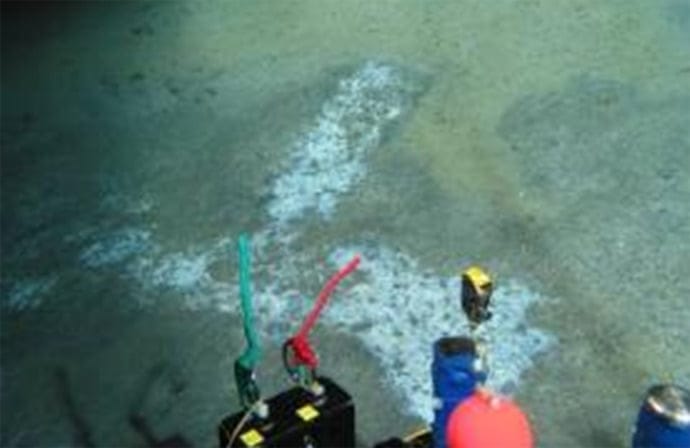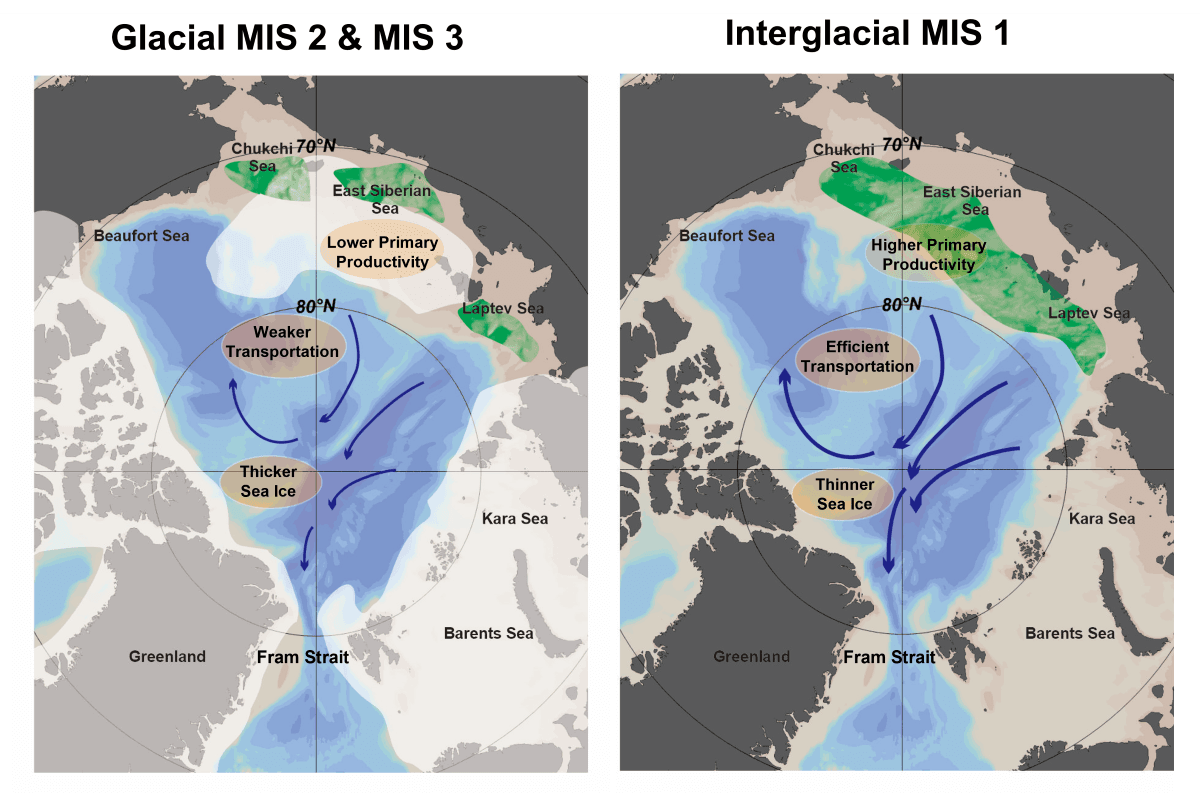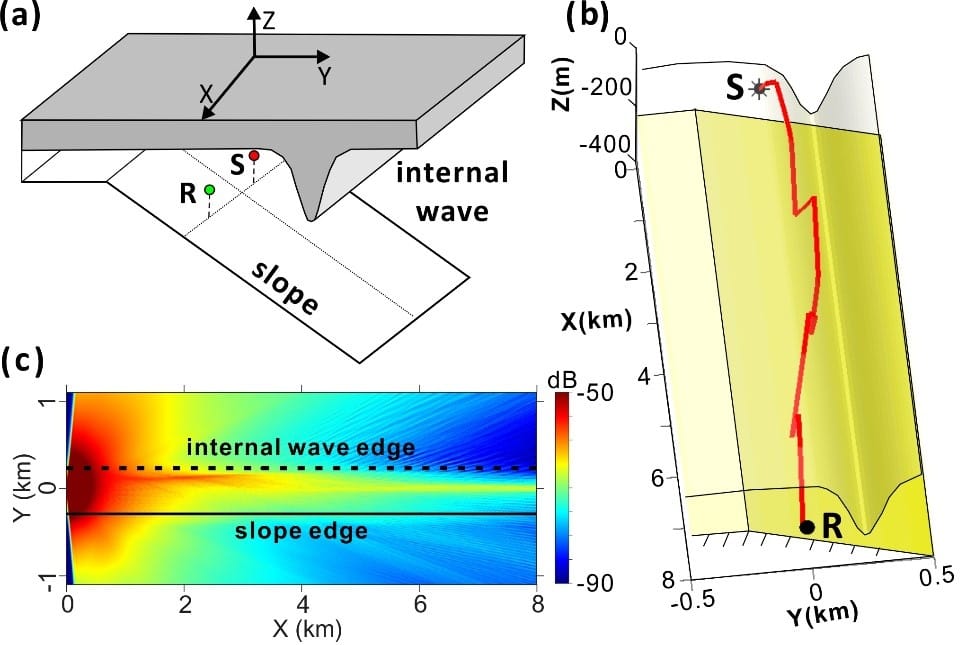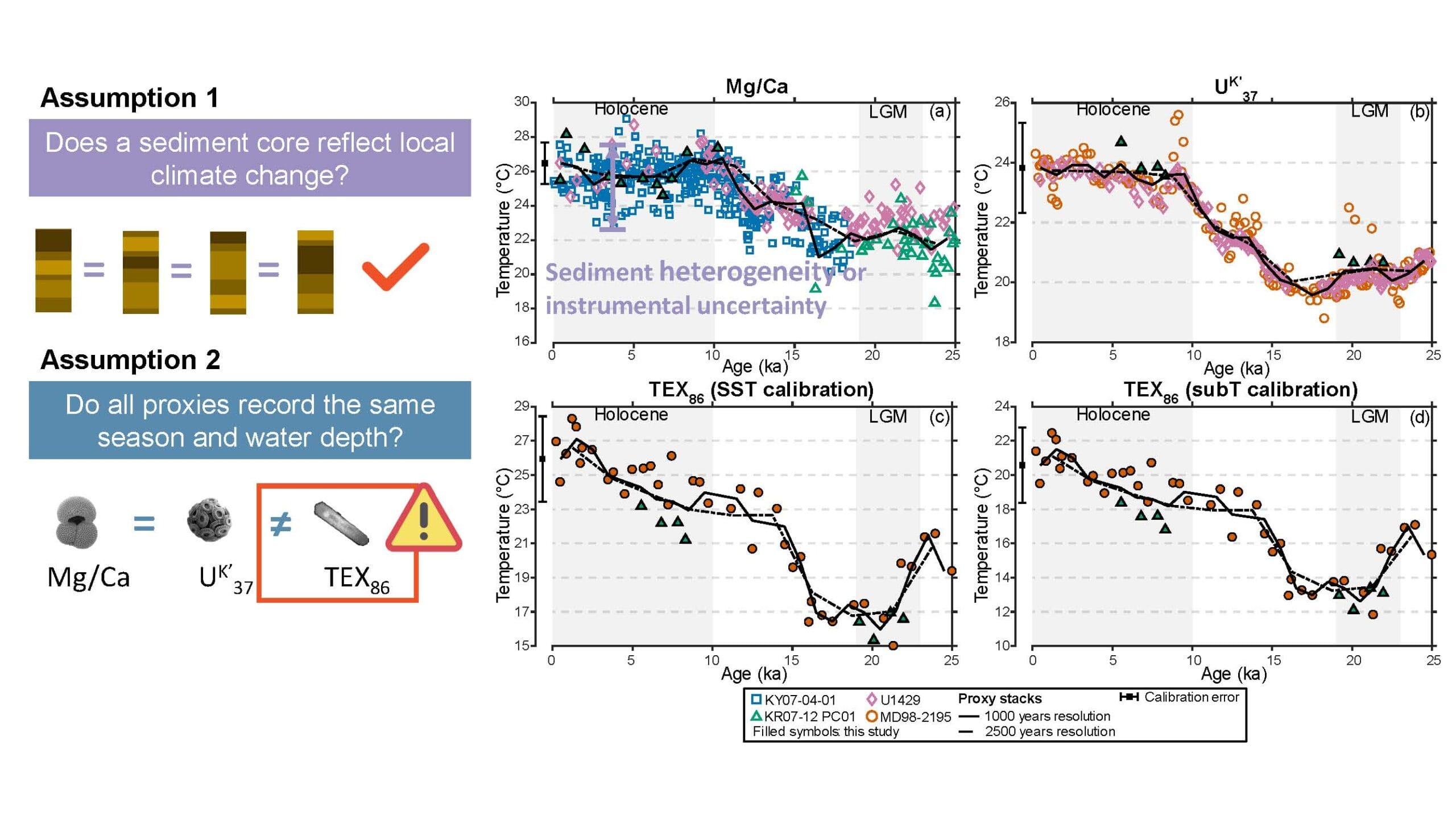台灣西南深海環境強烈受到天然氣水合物的生成與相關生地化反應所影響。大量甲烷氣來自於有機碳的發酵或熱裂解,養育了位於沈積物中各種匯聚於不同深度以及海床表面的微生物群落。主要的反應(圖一)包含硫酸鹽還原作用、甲烷厭氧氧化作用(AOM)、鐵錳再循環,自生性碳酸岩及硫化鐵礦物形成、天然氣水合物形成與解離等。台灣西南海域在地體構造環境上於短距離內存在相鄰的活動及被動大陸邊緣兩種截然不同構造故對於氣體在不同構造的冒出以及後續產生不同的生地化現象提供非常佳之對比研究環境。圖二為本研究與日本JAMSTEC共同合作使用r/v Natsushima 上之ROV Hyperdolphin於研究區域Formosa Ridge所發現大量共生貽貝(Bathymodiolus platifrons)、白螃蟹galathied crab (Shinkaia crosnieri)、笠螺(Bathyacmea tertia)與艾世蝦(Alvinocaris longirostris)在海床上交織成為一個罕見之深海茂盛之自營性生態系統。圖三,向上擴散的甲烷伴生強烈硫酸鹽還原作用所產生的硫化氫養育群聚在海床表面上的Beggiatoa細菌叢。

Figure 1. Major biogeochemical processes offshore SW Taiwan.
Figure 2. A chemosynthesis community on top of the Formosa Ridge.
Figure 3. Beggiatoa bacteria mat near the Formosa Ridge.
2. Chemical weathering of small rivers drainage basins:
台灣的地貌受到島嶼的快速隆起以及頻繁的地震活動造成的強烈物理剝蝕而改變且產生與傳輸高懸浮顆粒至台灣周圍海域。除此之外,頻繁的颱風以及雨季洪水也影響了河水及懸浮顆粒的組成。我們的研究課題之一著重於台灣小河川溶解與顆粒態於空間和時間上的變化。
Gas hydrate formation and associated biogeochemical processes is actively altering deep sea environments offshore SW Taiwan. Abundant methane from organic carbon fermentation and thermogenic source fed assorted forms of microbial community at various depths in sediments as well as near the sea floor. Methane migration could induce biogeochemical processes (Figure 1) including sulfate reduction, anaerobic methane oxidation (AOM), iron and manganese recycling, authigenic carbonate and iron sulfide minerals formation, and gas hydrate formation/dissociation. Offshore SW Taiwan, situated in a complex tectonic settings with two types of tectonic modes, active and passive margin, adjacent to each in a short distance near Taiwan, is ideal environment in studying gas venting and types of biogeochemical processes under different tectonic settings. Shown in Figure 2 are symbiosis mussel (Bathymodiolus platifrons) overlying by another symbiosis galatheid crab (Shinkaia crosnieri) intertwined with limpet gastropoda (Bathyacmea tertia) and shrimp (Alvinocaris longirostris) on top one of our research environment, the Formosa Ridge, using ROV Hyperdolphin on board r/v Natsushima on a joint cruise with the JAMSTEC. Figure 3 shows a layer of bacteria mat (Beggiatoa) feeding by hydrogen sulfide produced from sulfate reduction with methane diffusion upward reaching the sea floor.

Figure 1. Major biogeochemical processes offshore SW Taiwan.
Figure 2. A chemosynthesis community on top of the Formosa Ridge.
Figure 3. Beggiatoa bacteria mat near the Formosa Ridge.
2. Chemical weathering of small rivers drainage basins:
Physical denudation as a result of rapid island uplift and frequent earthquake is actively altering Taiwan’s landscape as well as delivering a very high amount of particles into seas surrounding Taiwan. In conjunction, frequent typhoons and monsoon floods are also affecting river water and particle compositions. One of our research topic focuses on spatial and temporal variations of Taiwan’s small rivers. We have been study chemical compositions of river dissolve and particles in trying to understand the impact of weather pattern on small rivers in the subtropical environment.










